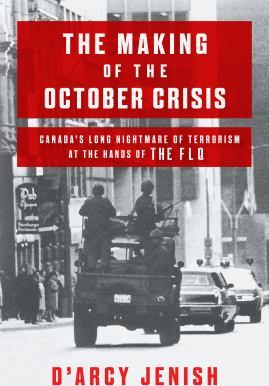
The making of the October Crisis : Canada's long nightmare of terrorism at the hands of the FLQ
The first bombs exploded in Montreal in the spring of 1963, and over the next seven years there were hundreds more. There were dozens of bank robberies, six murders and, in October 1970, came the kidnappings of a British diplomat and a Quebec cabinet minister. The perpetrators were members of the Front de Liberation du Quebec, dedicated to establishing a sovereign and socialist Quebec. Half a century on, we should have reached some clear understanding of what led to the October Crisis. But no--too much attention has been paid to the Crisis and not enough to the years preceding it. And most of those who have written about the FLQ have been nationalists, sovereigntists or former terrorists. They tell us that the authorities should have negotiated with the kidnappers. They contend that Jean Drapeau's administration and the governments of Robert Bourassa and Pierre Trudeau created the October Crisis, by invoking the War Measures Act and by putting soldiers on the streets and allowing the police to detain nearly 500 people without warrants. Using new research and interviews, D'Arcy Jenish tells for the first time the complete story--starting from the spring of 1963. This gripping narrative by a veteran journalist and master storyteller will change forever the way we view this dark chapter in Canadian history.
Available Copies by Location
| Location | |
|---|---|
| Victoria | Available |
Browse Related Items
| Subject |
| FLQ. Québec (Province) > History > October Crisis, 1970. |
- ISBN: 9780385663267
- Physical Description 360 pages : illustrations ; 25 cm
- Publisher [Place of publication not identified] : [publisher not identified], 2018.
Content descriptions
| Bibliography, etc. Note: | Includes bibliographical references and index. |
Additional Information



